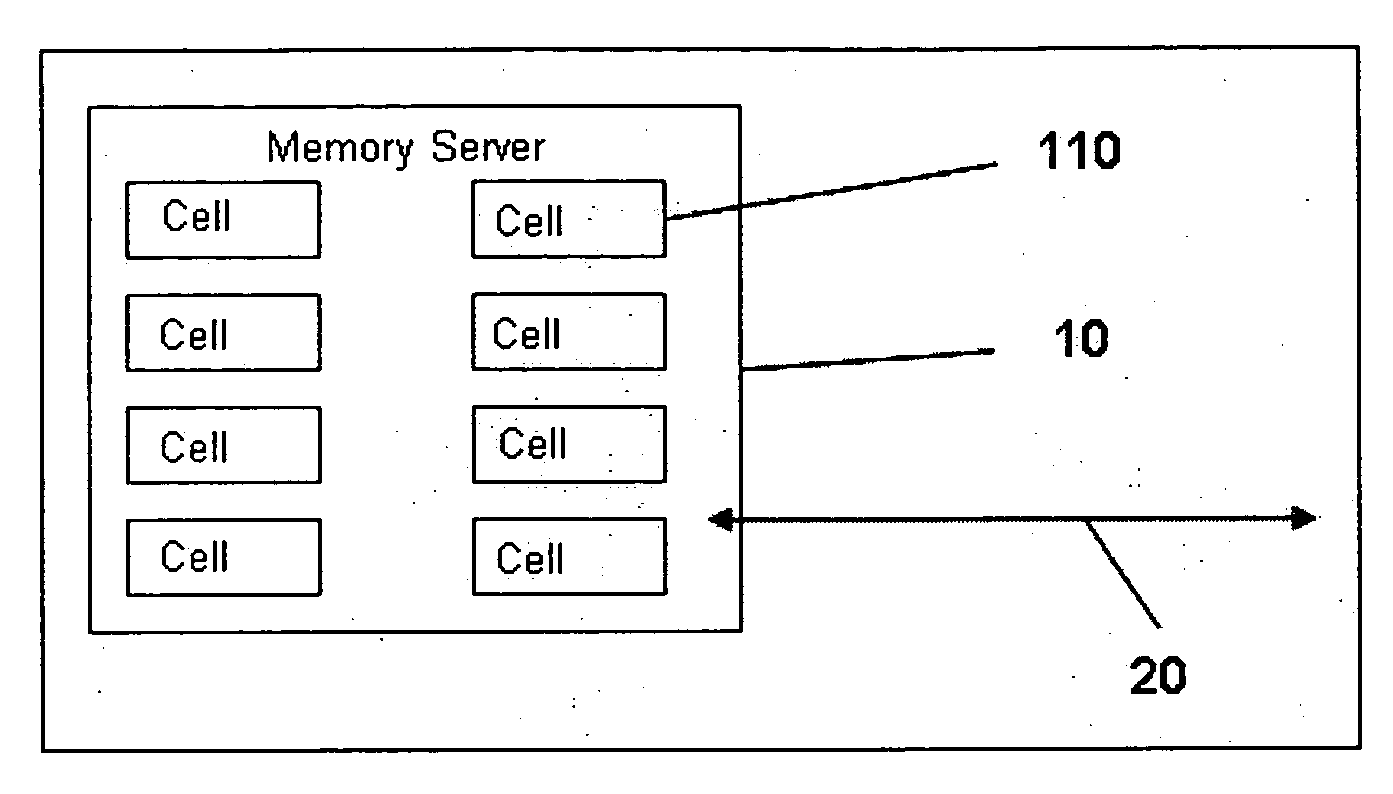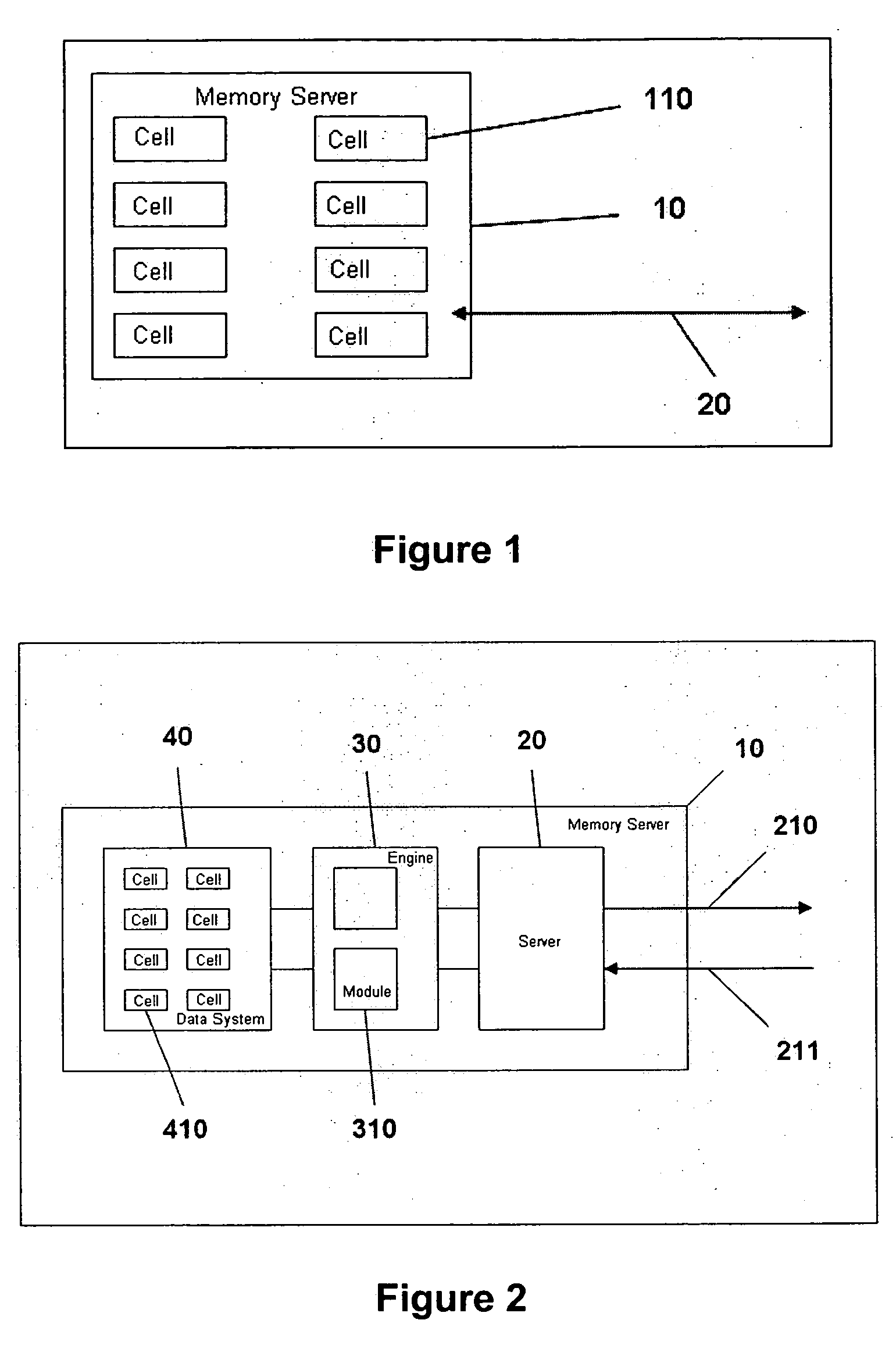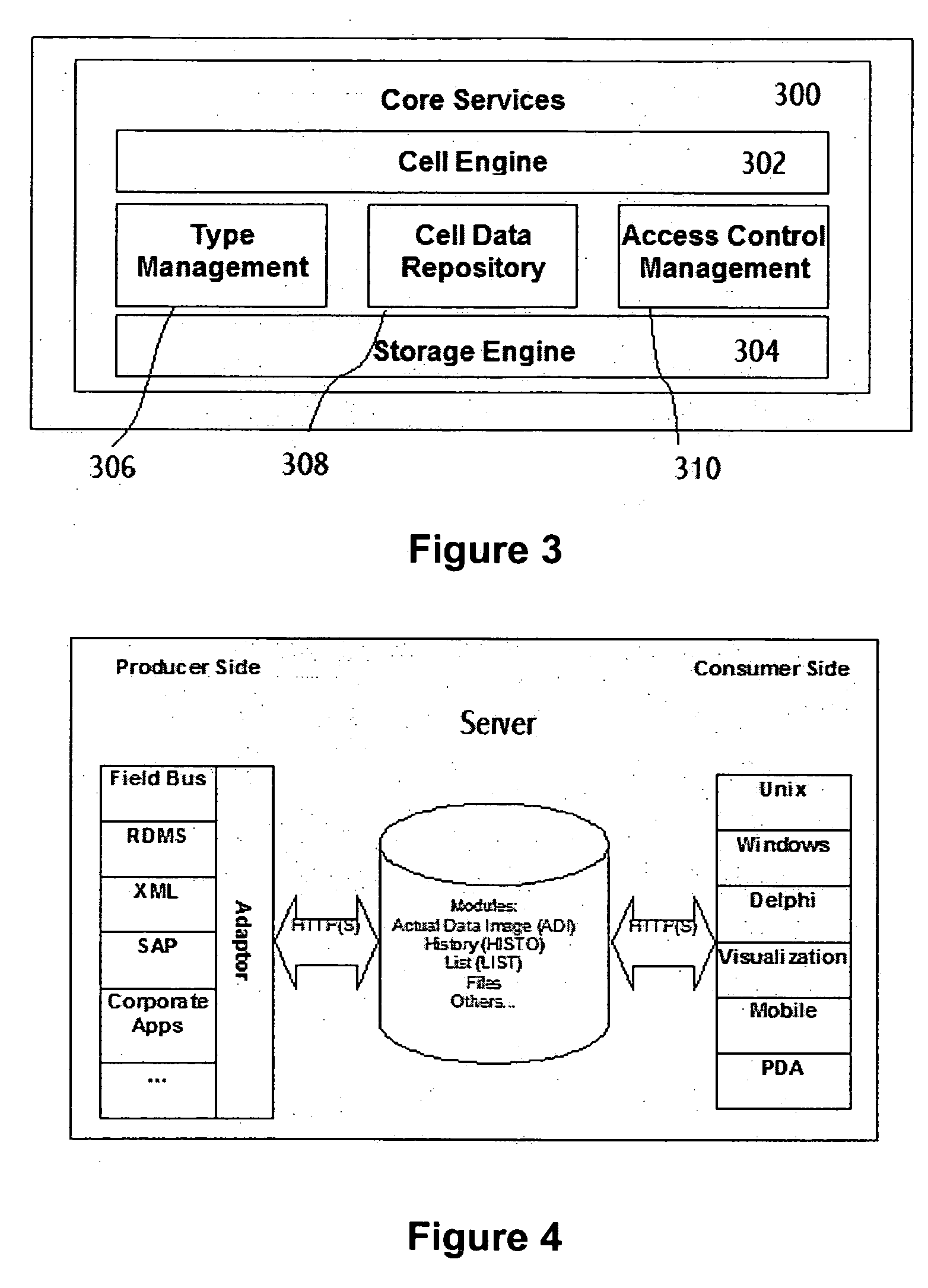Subscription service for access to distributed cell-oriented data systems
a cell-oriented data and subscription service technology, applied in special data processing applications, instruments, electric digital data processing, etc., can solve the problems of inability to administer and/or control cell-oriented communication in meaningful ways, inability to easily establish cell-oriented communication, and increase the difficulty of sharing data and resources on a network. achieve the effect of high configurabl
- Summary
- Abstract
- Description
- Claims
- Application Information
AI Technical Summary
Benefits of technology
Problems solved by technology
Method used
Image
Examples
Embodiment Construction
[0025] The present invention provides powerful systems and methods, for example embodied in a web server enhanced with specific modules, that enable fast and easy access to stored data. Data of any type, such as text, number, voice or other audio, photographs or other images, video, and others, can be accessed by a client that directed storage of the data or exchanged like a mailbox with timestamps. By way of example, data cells can be created, stored and accessed on the inventive web server from any device which supports IP protocols, using a familiar web interface.
[0026] More particularly, the present invention extends to data storage subscription methods and associated systems, methods, and computer program products configured to implement universal resource identifiers with cell-based communication. In one implementation, URIs provide one or more users with access to cells using a simple, commonly used communication protocol in a highly configurable way. Examples of cell-based ...
PUM
 Login to View More
Login to View More Abstract
Description
Claims
Application Information
 Login to View More
Login to View More - R&D
- Intellectual Property
- Life Sciences
- Materials
- Tech Scout
- Unparalleled Data Quality
- Higher Quality Content
- 60% Fewer Hallucinations
Browse by: Latest US Patents, China's latest patents, Technical Efficacy Thesaurus, Application Domain, Technology Topic, Popular Technical Reports.
© 2025 PatSnap. All rights reserved.Legal|Privacy policy|Modern Slavery Act Transparency Statement|Sitemap|About US| Contact US: help@patsnap.com



